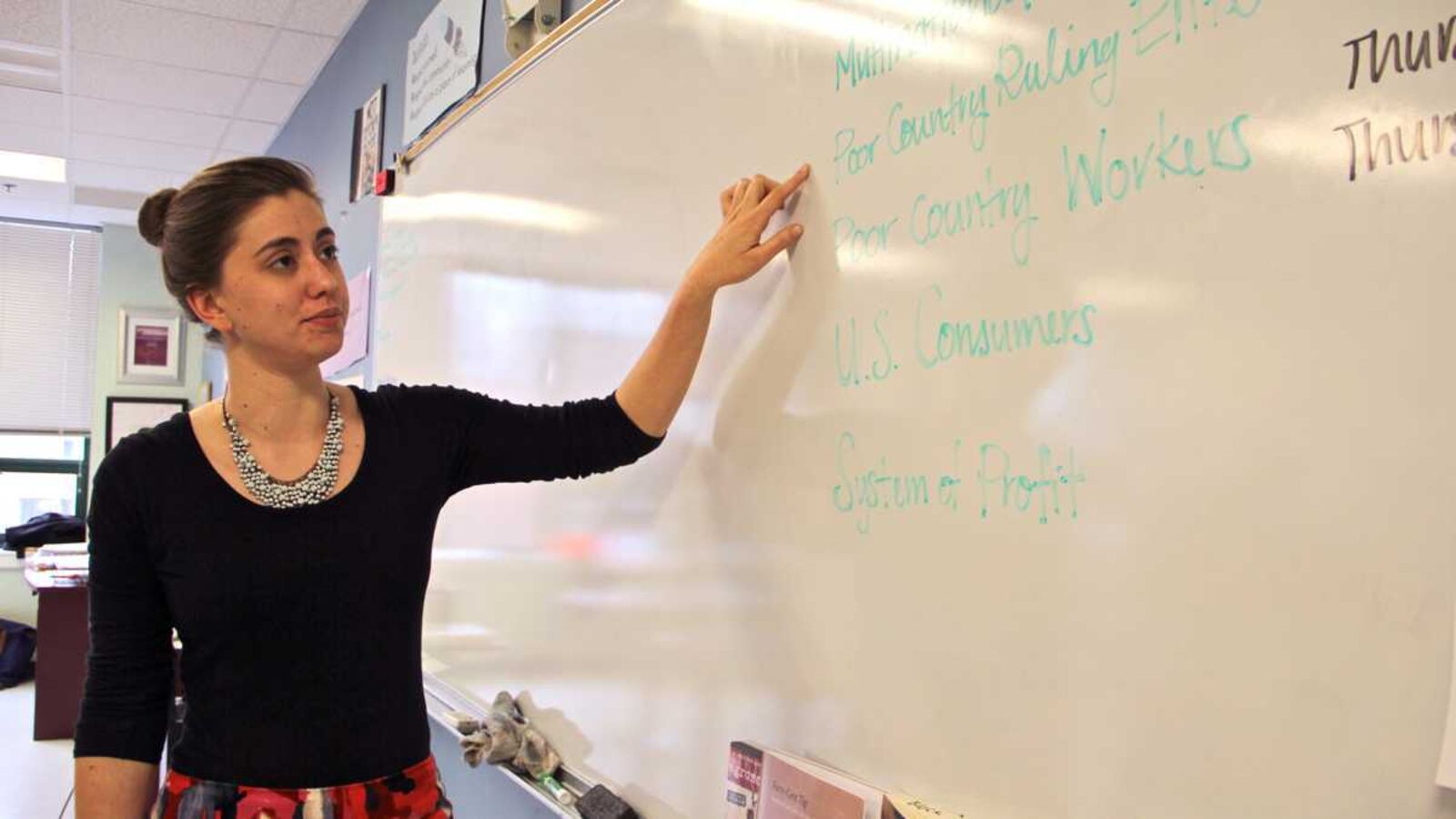This article was originally published in The Notebook. In August 2020, The Notebook became Chalkbeat Philadelphia.
Your browser does not support the audio tag.
There may not be three more yawn-inducing words in the English language than public employee pensions.
But because the Commonwealth of Pennsylvania is saddled with $53 billion in state employee pension debt, those words are at the center of nearly every conversation in Harrisburg this spring.
As politicians wage ideological warfare over the best way to deal with the rising costs associated with this debt, teachers and state workers are being targeted for major concessions.
The sharpest cuts, though, would come to the next generation of hires.
Case in point is Sophie Date. At 25 years old, she beams with excitement when she talks about teaching.
"I’m loving being in the classroom and I want to get really good at teaching, and I know that takes a lot of time and a lot of hard work," she said.
Date is about to get her master’s in education at the University of Pennsylvania. Coming into the program, she was fairly certain she wanted to join the profession, but after a year of student-teaching in a Philadelphia high school, she says she’s found her home.
"I just love being able to build relationships with students on a day-to-day basis and get to see their daily life and the way that they change and the way that they grow," said Date.
Pennsylvania is in such a hole after a decade of underpaying its pension bill that top Harrisburg Republicans say it would be better to get the state out of the pension business altogether.
So, in a way, Date is exactly the type of teacher that state Republican leaders are banking on – people who love the profession enough that they’ll still pursue it even as lawmakers attempt to eliminate guaranteed retirement benefits.
Based on a bill that was fast-tracked through the state Senate last week, Date – if hired for next school year – would be enrolled in a 401(k)-style plan where retirement security is tied to the stock market.
The school employees’ pension system says the Senate plan would ultimately deliver benefits about one-third the size of those earned by employees under the current system – benefits which, on average, provide a $25,000 annual payout to a rank-and-file state employees and teachers.
Date remains undeterred by the possible changes.
"I love what I do and I wouldn’t trade that," she said. "I will make other plans."
Senate Majority Leader Jake Corman has been the driving force in the current conversation about rethinking state employee retirement benefits. He insists on major changes to the pension system before considering any of Gov. Wolf’s plans to increase classroom spending.
"To retire at a certain age and live 30, 40 years on public pensions paid by taxpayers is an arithmetic problem for us. And we just have to deal with that," he said. "We have to structure a program that meets today’s world, not a world that we lived in 40, 50 years ago."
One of the more compelling reasons for ditching pensions is that it takes taxpayers off the hook for lawmakers playing politics.
"You don’t see politicians running around saying, ‘I want to fully fund the pension plans.’ That’s not a good campaign slogan," said Nathan Benefield, vice president of policy for the Commonwealth Foundation, a free-market Harrisburg think tank.
The biggest reason that the state is facing a massive pension payment increase is that lawmakers, including Corman, voted to increase benefits and then immediately found other, more politically appealing issues to which they wanted to devote state dollars.
This put Pennsylvania second from the worst in the nation when it comes to making its pension payments. New Jersey takes top honors.
"The politics really encourage the underfunding of the plans and the over-promising of the benefits," said Benefield.
The ‘real’ retirement crisis
Ditching pension plans – which has happened in much of the private sector – puts all the risk on employees, who, as the private sector has shown, are pretty terrible at planning for their own retirement needs.
About half the workers in the private sector have no retirement savings at all. Those who do have, on average, about $100,000 in the bank as they near the end of their careers – far less than experts suggest.


